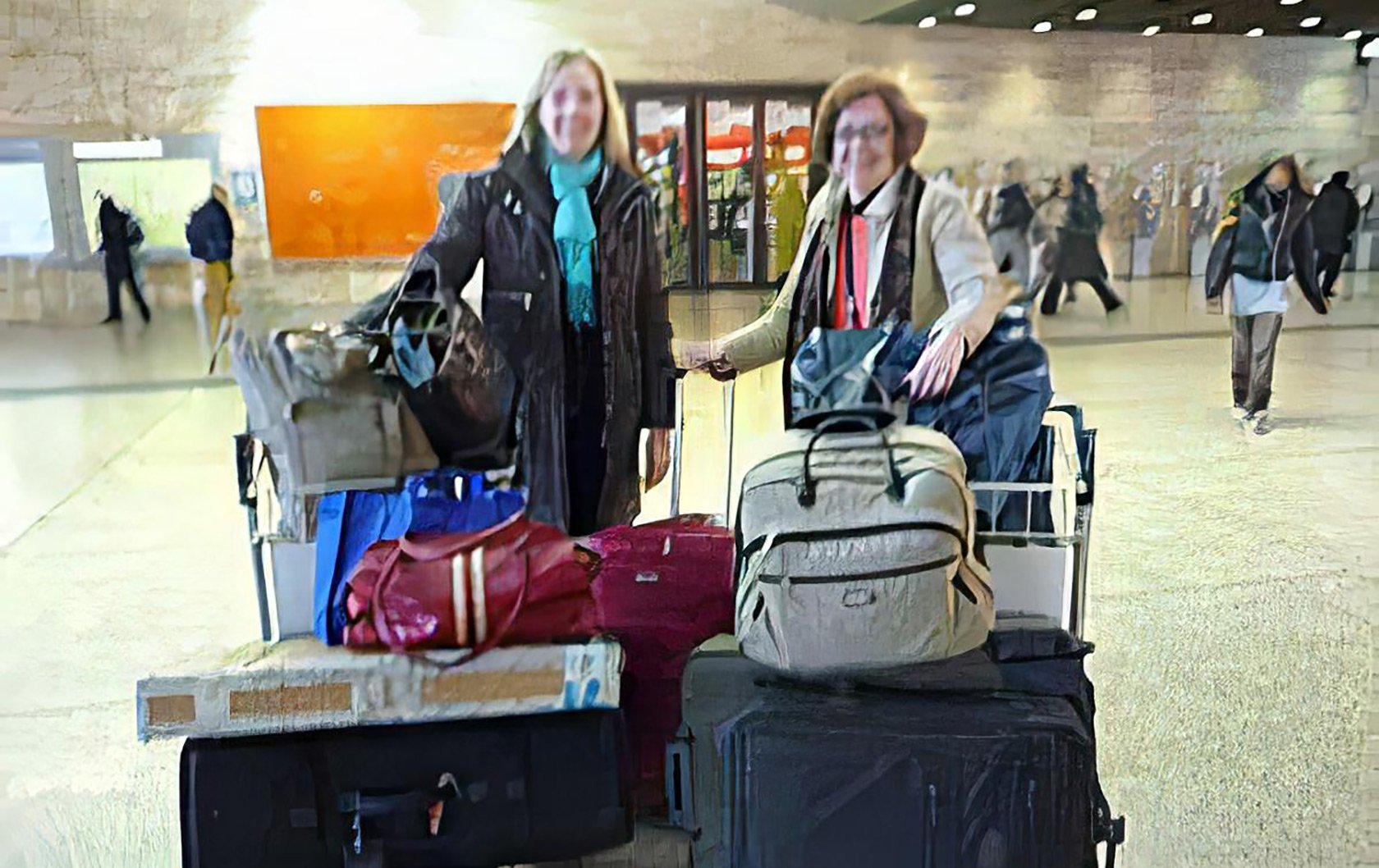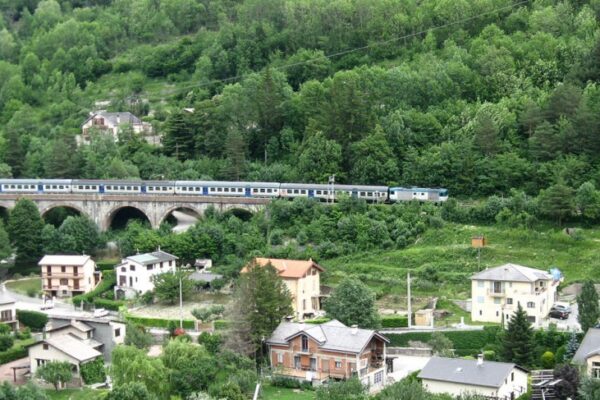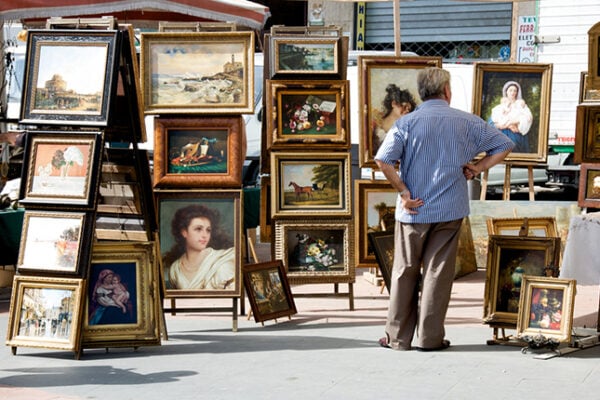Here’s a collection of our wisdom regarding trains, including:
- Reserving train tickets
- Seat selection
- Rail protection insurance
- Changing reservations
- Rail pass?
- Cheaper to drive?
- First or second class?
- At the station
- Validate tickets
- Paperless tickets
- Boarding train
- Changing seats
- Food onboard
- Call your greeter
- Landing in Rome/Milan + same day train to Florence
Reserving train tickets
Consider purchasing your train tickets in advance from RailEurope. It will save you from waiting in long lines and will assure you that you get the train you want. If you don’t purchase tickets in advance you may find that peak travel days and times that includes weekends, holidays and throughout the summer, for the popular routes are sold out when you arrive at the station. You can usually purchase tickets in advance for the high speed trains & long distance 120 days in advance. For local and regional trains generally only 30 to 40 days in advance.
While there may be trains leaving to your desired destination every 30 minutes, you might have to wait a few hours before there is availability. Or your party may find themselves spread out across random seats in multiple cars, particularly difficult for families. Or you may have to take the slower train which makes numerous stops, increasing your travel time by several hours.
For more information about train travel, schedules, prices please contact the experts at RailEurope.
If you prefer to wait until you get to Italy to purchase tickets, look for local travel agencies in Italy that sell tickets, although there may be a small service fee, often the wait is shorter and the service better than in the train station.
Some cities have multiple stations so do your homework to determine which station to choose.
Rome – Rome’s main train station is Stazione Termini, but there are several other stations throughout the city for commuter trains. The Rome Tiburtina station is a little further outside of the center but also offers high-speed, non-stop trains between the major cities.
Florence – Florence has 3 stations. The main station is Santa Maria Novella also shown as SMN on the schedules. Overnight trains often arrive at the Firenze Rifredi or Firenze Campo di Marte stations, less centrally located.
Venice – Santa Lucia station is the train station that is right in Venice, but you can go to Mestre on the mainland and catch a frequent onward train to Santa Lucia.
Seat selection
When you reserve your tickets on RailEurope, don’t put in seating preferences; the automated system defaults to trying to put your party together. If you do select window/aisle preferences things can end up badly. For example if you request two window seats and the only available are in separate carriages, that is where you will end up. Better to be seated together and then to negotiate your desired seat.
You cannot reserve forward facing seats only. It doesn’t make sense, actually, because trains pull into the main stations going in one direction and then leave the station by reversing direction. So you may be facing forward when you arrive but backwards when leaving.
Rail protection insurance
We recommend NOT purchasing the rail protection insurance offered by some of the rail booking sites; it’s pretty useless, only covers the tickets and only if you cancel before you travel for a partial refund. A general purpose travel insurance policy such as those offered by Red Sky gives better coverage and covers a broader spectrum of issues.
Changing reservations
Officially, you may change your reservations up to three days before travel and if you wish to go on a different train, you may have to repurchase tickets. You might be able travel on another train to the same destination on the same day maybe without a seat assignment, go to the service desk for assistance with changing trains. If you miss your train ask at the train station what your options are.
Should you buy a Eurailpass?
It depends on the amount of train travel you plan to do. A rule of thumb is that for four or fewer train trips, point-to-point is usually less expensive than a Eurailpass. Keep in mind that the Eurailpass does not include the seat reservation fee, so factor that expense and advance effort to reserve seats. When you book point-to-point tickets you are simultaneously reserving seats. Use the RailEurope site to check the costs and with some careful planning you can calculate which option works best for you. They will provide telephone assistance but usually the hold times are long.
Is it cheaper to rent a car?
For four or more people, renting a car might be a less expensive option and provides more schedule flexibility and spontaneity. Factor in the extra time and hassle factor required to pick up and drop off the car which includes potentially slow, inefficient lines at the car rental counter, navigating and getting lost, the cost of parking, gas, tolls. Car rentals, gas and parking in Italy can be pricey and many historic cities have limited traffic zones to discourage private vehicles in city centers. But for visits to many of the ancient hills towns a car is often the best option since some are not accessible by train. You can obtain a car rental quote from AutoEurope.
First class or second class?
First class has nicer, roomier seats that recline, more luggage storage space. Second class just fine for the relatively short trips between Venice-Florence-Rome. In either class, luggage storage will be at the ends of each car in a communal area, like an airport shuttle. There is also room for luggage between the backs of seats and for smaller items, in racks above the seats. You are responsible for getting your luggage on and off the train. As the train approaches the station people will crowd the exits. We tend to keep a close eye on our luggage as the train pulls into the station. People exit quickly to snag a luggage cart on the platform.
At the train station
Arrive at the train station 20 minutes before your train, longer if you want to purchase a snack or bottled water for the ride. Keep a close eye on luggage at all times. Look for large electronic boards with destinations. The tracks are usually not posted until 5 or 10 minutes before train time. The word for track is BINARIO, which you may see abbreviated BIN.
Get on the right train. Match the train # on your ticket to the train # on the big board. There may be several trains to the same ultimate destination, fast and slow.
The train destination may be the major city beyond your station, so if you are traveling from Rome to Florence, the schedule board may show Milano because that is the ultimate destination of the train. Match departure times and train numbers to find your train. This is one of the most counterintuitive things to deal with. You’re at Rome’s Termini station and are taking the train to Florence. You see the track posted for the train to Florence, hurry over to the track, get on the train, settle in and discover you are on the “milk run” train which takes nearly 4 hours not the express 1 hour, 35 minute train which was leaving at almost the same time but had a posted final destination of Milan. The only way to know this is to match the train numbers posted on the board to the train numbers on your ticket.
Validate your tickets
Conductors validate onboard with a mobile phone app. You may see older style yellow validator machines at the beginning of the track. Look like yellow parking meters about 4 feet high. They are disappearing, but now I validate with them just in case.
Paperless Tickets
For Italo trains, which operate on the major routes within Italy, you can reserve e-tickets through RailEurope and receive the confirmation via email. If e-Tickets are available for your train it will appear as an option during the online ticket purchase check out process. You will need the ‘PNR’ confirmation code from the email and a valid ID to provide to the conductor. Tickets for all other trains within Italy or between countries require paper tickets, mailed to you by RailEurope.
Boarding the train
Match your seat reservations to both car/carriage and seat. The word for car/carriage is CARROZZA. There are first and second class cars. First class have a big 1 on the doors, second have a 2.
Changing seats
Consider negotiating a seat change an opportunity in international relations. You may certainly try to explain in English but pantomime works well in Italy. Remember, also, that your fellow travelers may be foreigners themselves, making communication more interesting. Courtesy and smiles are your best tools; speaking loudly doesn’t improve understanding.
Food onboard
First or second class, don’t expect anything interesting in the way of food service in either class; a snacks and drinks trolley will pass through with a very limited selection of beverages and food for purchase. Best to buy something before you board the train. The larger train stations have good cafeterias with take-away options.
Call your vacation rental greeter
Call the greeter before you board the train to reconfirm your check in appointment. That way if there is a problem using your phone in Italy you can seek out a pay phone.
Landing in Rome or Milan + Same Day Train to Florence
If you land in Rome or Milan and are catching the train to Florence the same day here is how to estimate which train to catch, barring flight delays or lost luggage. Landing time + 2 hours to clear passport control, get luggage and find transportation + 1 hour to reach train station + 1 hour at station = 4 hours before you board the train from the time you land. If you are an experienced traveler or are not checking luggage you can reduce the estimated time.




